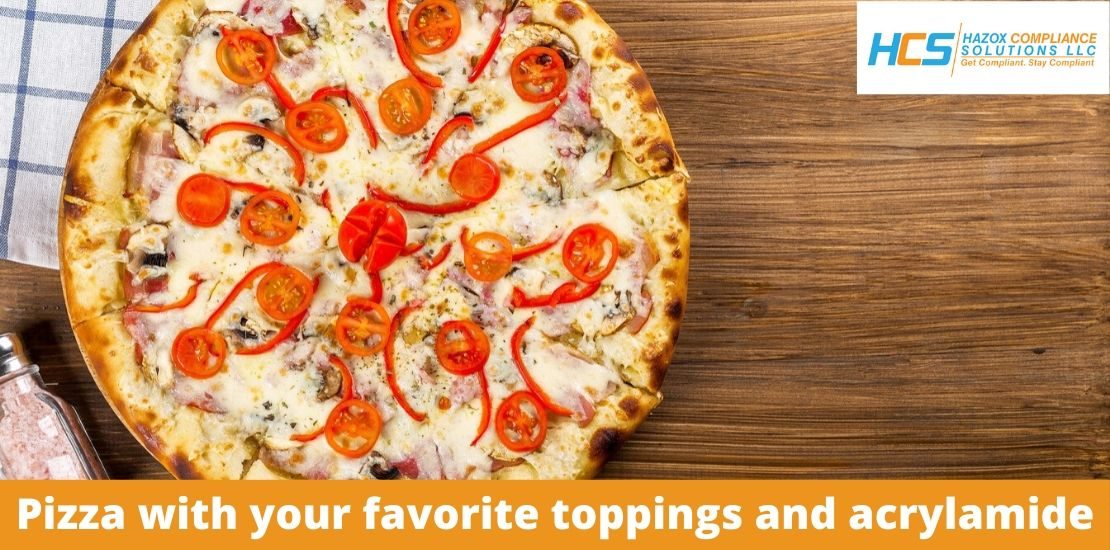- March 1, 2020
- Posted by: admin
- Category: Blogs

The burnt bits around the edges, called leopard spots, are what makes our Pizza so traditional looking. These are the parts of the pizza that has become slightly charred during the high temperature cooking process. Unfortunately, these conditions are also perfect for the formation of acrylamide in our food.
Over the last couple of weeks, we have looked at what acrylamide is, how it affects our health and how we can detox our bodies from it. We have included links at the bottom of this article to each of the topics we have talked about.
In this last article, we will look at healthy alternatives to foods containing acrylamide.
Since the discovery of acrylamide in some high-temperature cooked starchy foods in 2002, the food industry, regulatory agencies and research groups have successfully collaborated on strategies to reduce acrylamide levels in foods. The FDA provides a list of foods and their acrylamide content (https://www.fda.gov/food/chemicals/survey-data-acrylamide-food) and indicates that the percentages have been reduced in potato chips and cookies, suggesting that the industry has successfully implemented exposure reduction strategies.
For more than a decade, fast food chains such as McDonalds, KFC, Burger King and Wendy’s have chosen to fry their potatoes at lower temperatures and to choose varieties with lower starch content (https://www.dailymail.co.uk/news/article-4154294/McDonald-s-reduce-cancer-risk-chemical-fries.html). This can be replicated at home, where one can choose to change the cooking method for foods susceptible to forming acrylamide. In the case of potatoes and other tubers such as carrots, parsnips, sweet potatoes etc, there are certain recommendations such as storing them outside the refrigerator to avoid an increase in sugars. Choosing to steam or microwave, and soak potatoes in water before cooking has also been shown to reduce the amount acrylamide formed. In the case of frying, a light golden color should be preferred to a dark one, as recommended by the Food Standards Agency (FSA) in its “Go for Gold” campaign (https://www.food.gov.uk/safety-hygiene/acrylamide)
Other carbohydrate rich foods, such as breads and pastries should be eaten in moderation, and the options that produce the lowest levels of acrylamide should be chosen. In the case of toast, we should aim for a light golden color rather than a darker more burnt option. Cooking instructions should also be followed for packaged foods to avoid cooking them longer than needed or at a higher temperature. A balanced diet with plenty of fresh foods and decreased intake of processed foods is recommended to decrease the risk of cancer associated with acrylamide. All of these are general recommendations offered by the FDA (https://www.fda.gov/consumers/consumer-updates/you-can-help-cut-acrylamide-your-diet).
There are new developments in the pipelines. A biotechnology company called Novozymes is working on an enzyme that can decrease acrylamide in certain foods by up to 95% (https://www.novozymes.com/en/advance-your-business/food-and-beverage/veg-apps/acrylaway). This technology is being used by several food companies, in more than 30 countries around Europe, primarily in the baking industry during the production of potato and corn-based biscuits, cakes and snacks. This enzyme is also making its way into breakfast cereals. However, the enzyme is not yet used regularly in the production of coffee.
But that doesn’t mean you should stop having your coffee. In an independent study, coffee substitutes were found to contain a higher level of acrylamide than coffee itself. No significant variations were found between coffee species or in preparation methods; however, a significant negative correlation was observed between acrylamide levels and color intensity in roasted coffee. (https://www.ncbi.nlm.nih.gov/pubmed/24325083). In other words, a medium to dark roast should always be chosen over the lighter roasted beans.
At Hazox we believe that consumers should be aware of the hazardous chemicals used in everyday products to make informed decisions before buying and consuming the items they need.
If you liked our article, please give us a Like and follow us on:
Facebook: https://www.facebook.com/HazoxComplianceSolutions
Twitter https://twitter.com/Hazox_Inc
LinkedIn https://www.linkedin.com/company/hazoxcompliancesolutions
Youtube: https://www.youtube.com/channel/UCIeBucyOUEtQFSAymS3TwQQ
As promised earlier, here are all the posts that you may have missed in this series
What is acrylamide?
What foods contain acrylamides?
How does acrylamide form in your food
What other sources can I be exposed to acrylamide besides food?
What does acrylamide do to your health?
Does acrylamide cause cancer?
What is a safe amount of acrylamide?
How does your body break down and dispose of acrylamide?
Can you detox from acrylamide in your body?
How do you protect yourself from acrylamides
